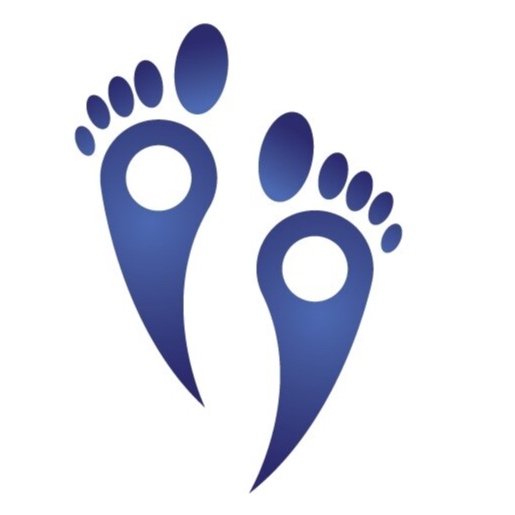How long the sciatica pain lasts for?
Meet Jasper, telling his journey about sciatica, the problems he faced during that period, how he get rid it of it and prevent it from coming back!
When I was 20, I worked as a lifeguard and surf instructor while also volunteering for the rescue squad. As a volunteer, I worked with an extraction squad that specialised in vehicle accident victims. It was vital to me that my body be ready for any wave or rescue.
I awoke one morning with severe back ache. I had never suffered back discomfort till this point in my life. I went about my daily routine, which included eight hours in the classroom. The discomfort got worse all day, to the point where I could barely move or sit. On the way home that night, I felt my pain started shooting down my left leg with numbness and I started to limp, I did what most people do and made an appointment with my doctor. An MRI revealed slipped or herniated L5-S1 and L4-L5 discs. The MRI report also used phrases like degenerative disc disease, which made me wonder if this would be a lifelong issue for me.
They informed me if me it is called sciatica (numbness and discomfort down my left leg). Remember that I had never been to physiotherapist and had no idea what these injuries were.
Like most others, I became really worried. Back problems destroyed many people's surfing careers, and some were completely disabled. I was sad that my professional surfing days were over and felt vulnerable. I was used to being the big strong guy who could extract people from flooded cars. Not being able to perform such things caused me a minor identity crisis.
I felt my herniated discs in my back would never heal or return to normal. But I also learnt that having slipped or herniated discs does not automatically cause sciatica. Pain, numbness, or weakness occur only when a herniated disc irritates adjacent nerves. I learnt good body mechanics to avoid sciatica. To think I had no idea how to bend, lift, sit or even stand properly for so long.
My slipping disc was a blessing in disguise. The injury taught me postures and movement patterns that have helped my knees, hips, and lower back for decades. Sciatica and learning good movement made me a better surfer. I improved my surfing since the same positions for bending and squatting correctly apply to surfing. My back is now quite happy.
Sciatica isn't hard to understand. Actually, the answers are really simple to implement. Turn your injury into a chance to improve your athletic skills or posture, which can help you avoid future injuries...
I've suffered sciatica for 11 years. And I have to admit that this old injury has had no detrimental impact on my life. Back pain would reappear if I slouched and lifted incorrectly. In order to maintain appropriate posture, I stretch my hips every morning.
Having sciatica doesn't mean you have to give up your hobbies. Any sciatica treatment should emphasise healthy body usage. Achieve strength and flexibility to prevent movement patterns that aggravate sciatic discomfort (slouching, lifting with back, sitting inactively). Contact your local physical therapists to understand how to keep doing what you love even if you have sciatica.
Patients with sciatica usually present with deep, gnawing pain from the back or buttock into the back or side of the leg, which can be electric, shooting, stabbing or numbness tingling sensations. It might cause lower back pain and a limp when walking.
Sciatica is a painful ailment that belongs to the neuralgia family of pains. The term "neuralgia" indicates "pain from a neurological source," but that's not enough to diagnose.
Many primary health care practitioners use the term "sciatica" as a diagnosis, although this is not a proper study of the aetiology of the pain. What can induce sciatica?
Is all sciatica the same?
Sciatica can be caused by many things. The most common cause of sciatica is a pinched or compressed sciatic nerve root at the spine's outlet. Inflammation and muscle spasm from basic mechanical back pain; structural alterations such acute injury and fracture; or an overgrowth of bone after a lengthy history of deterioration.
Sciatica can also arise when the sciatic nerve is pinched by tight gluteal muscles in the rear. The sciatic nerve occasionally pierces the piriformis muscle in the glute complex, causing piriformis syndrome.
Why do you have pain?
Compression of the spinal nerve, also known as a trapped nerve, is a common feature in these two primary causes of sciatica. The compression or trap causes the nerve signals to be misconstrued as pain.
How do you know what type of sciatica you have?
We at The Podiatry and Physiotherapy Clinics can assist you!
We will evaluate all the structures and tissues in your body that may be pinching the sciatic nerve to assist us pinpoint the primary cause of your sciatic discomfort.
It will be much easier to develop a treatment plan targeted to your specific needs after we have identified the source of your sciatic pain.
It's a pain that runs down one leg. It's achy, burning, and sharp at times.
Sciatica makes it difficult to walk, sit, or sleep. A bulging (herniated) disc in the lower spine causes it. It is possible for these cushioning discs to slip out of place, causing pain.
Muscle spasms in the back or buttocks can cause sciatica.
If you fall into one of the following risk categories, you're more likely to develop sciatica:
Age is a factor (typically between 30-50)
You're tall, which means you're at a higher risk.
You're a smoker, right?
You're under a lot of mental strain.
You engage in strenuous physical activity, such as lifting frequently and bending and twisting.
You're on the road a lot.
The following are the most common sciatica symptoms:
A severe pain radiates down one leg (could also have numbness or tingling)
Low back ache
The good news is that symptoms of sciatica usually heals without the need for surgery. The bad news is that the condition can take anywhere from a few days to a few weeks to heal depending on medical and physiotherapy input.
What are the best ways to deal with the discomfort? Try:
Anti-inflammatory medications like ibuprofen or aspirin
Applying heat or cold to your muscles is a good way to relax them.
Moving. Do not sit or lie in bed for long periods of time. Sciatica can be helped by moving around. Walk on a regular basis.
Physiotherapy including low-back and hip stretches
Massage therapy or acupuncture if physiotherapist thinks will benefit
If the pain persists, your doctor may prescribe muscle relaxants, injection can be done with pain-relieving medication into your spine in the secondary care, and even discussion can be done around surgery. Pain and sciatica usually responds very well to physiotherapy treatments.
To book for an appointment you can call our normal reception line, 0121 285 5656 or email direct to hello@thepodiatryclinics.co.uk requesting an appointment. Please include your name, date of birth, your address and GP contact details.
You will be sent a form to complete and forward back to us or bring along on the day.
Contact us: 0121 285 5656 Email: hello@thepodiatryclinics.co.uk
OR simply click the button below!






